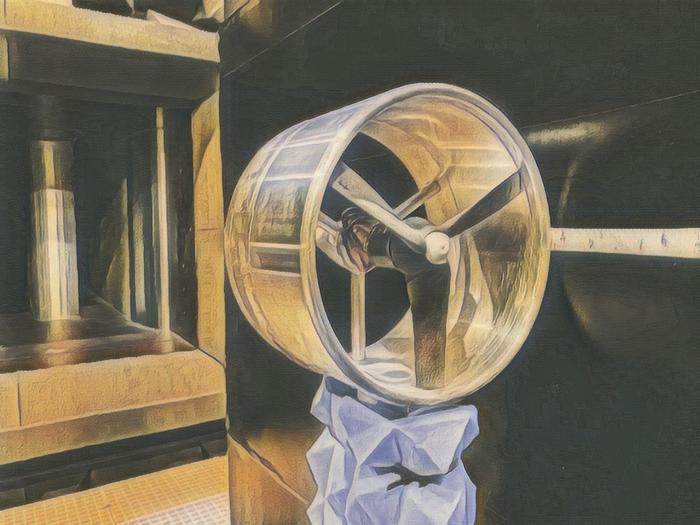Basal Ganglia Control Forelimb Movement Dynamics
In a groundbreaking advance that deepens our understanding of how the brain orchestrates movement, recent research has illuminated the dynamic interplay between neurons in the substantia nigra pars reticulata (SNr) and their postsynaptic targets in the brainstem, revealing nuanced mechanisms by which motor commands are precisely timed and executed. This study overcomes longstanding technical hurdles […]


In a groundbreaking advance that deepens our understanding of how the brain orchestrates movement, recent research has illuminated the dynamic interplay between neurons in the substantia nigra pars reticulata (SNr) and their postsynaptic targets in the brainstem, revealing nuanced mechanisms by which motor commands are precisely timed and executed. This study overcomes longstanding technical hurdles to record neuronal activity across interconnected brain regions in vivo, during voluntary forelimb movements, and offers unprecedented insights into the bidirectional control exerted by basal ganglia output pathways.
The basal ganglia, central to movement regulation, exert their influence largely through inhibitory output neurons in the SNr. These neurons project to diverse brainstem nuclei, modulating circuits that ultimately control muscle activity and motor behaviors. However, the complexity of SNr neuronal firing patterns, combined with the challenge of imposing artificial activity patterns through optogenetic perturbations in deep brain regions, has hindered efforts to causally link SNr dynamics with downstream motor control in freely moving animals.
To circumvent these limitations, researchers employed high-density Neuropixels probes to simultaneously record from presynaptic SNr neurons and their target neurons in brainstem regions such as the midbrain reticular nucleus and lateral superior colliculus—areas implicated in motor coordination and sensorimotor integration. Anatomical tracing studies confirmed that caudal lateral SNr neurons collateralize extensively within these brainstem regions, validating their monosynaptic targeting of postsynaptic neurons critical for motor control.
.adsslot_wV7dqFMQLZ{ width:728px !important; height:90px !important; }
@media (max-width:1199px) { .adsslot_wV7dqFMQLZ{ width:468px !important; height:60px !important; } }
@media (max-width:767px) { .adsslot_wV7dqFMQLZ{ width:320px !important; height:50px !important; } }
ADVERTISEMENT
Through sophisticated spike timing analyses, the team identified putative monosynaptic inhibitory connections characterized by cross-correlograms showing a dip in postsynaptic firing immediately following presynaptic SNr spikes. This temporal pattern confirmed the inhibitory nature of SNr outputs. Crucially, these connected pairs exhibited complementary activity during forelimb movements: SNr neurons showed brief pauses in firing while their postsynaptic targets simultaneously increased spike rates aligned with movement phases. This inverse correlation suggests that transient disinhibition of brainstem motor centers via pauses in SNr inhibitory output serves as a permissive signal for initiating specific motor actions.
Extending beyond individual neuron pairs, the researchers examined population dynamics across SNr, lateral reticular formation (latRM), and midbrain reticular formation. They determined the precise timing of significant firing rate changes preceding movement onset by statistical changepoint analyses. Remarkably, the temporal unfolding of activity decreases in SNr neurons mirrored increases in the latRM and midbrain populations, occurring within overlapping time windows up to 500 milliseconds before movement execution. This temporal synchronicity indicates a coordinated pattern of activation and disinhibition essential for orchestrating complex motor behavior.
The findings challenge traditional, static models of basal ganglia output, revealing instead a dynamic sequence in which SNr neurons both suppress and license movement-related neuronal activity downstream. SNr pauses are not mere silences but structured signals that sculpt the excitability of postsynaptic motor circuits with high temporal precision. This bidirectional control motif allows flexible modulation of brainstem motor centers, enabling fine-tuned initiation and suppression of forelimb movements.
Notably, the brainstem targets of SNr neurons examined here—the midbrain reticular nucleus and lateral superior colliculus—have been increasingly recognized for their roles in sensorimotor integration and the fine control of limb movements, as shown in previous primate studies. This cross-species relevance underscores the evolutionary conservation of basal ganglia-brainstem circuits in governing goal-directed movements, and the present study’s findings provide a mechanistic basis for this conserved circuitry.
The employment of Neuropixels probes, capable of recording hundreds of neurons simultaneously with millisecond resolution, marks a technological leap permitting the direct observation of synaptically connected neuronal pairs in behaving animals. Previous approaches were constrained by anatomical access or limited recording capacity, precluding the high-throughput identification of connected neurons with behaviorally relevant activity. This work exploits the fine spatial trajectories of probe insertions to capture simultaneous activity in both presynaptic SNr neurons and their postsynaptic partners, offering a rare and valuable window into circuit function.
Although optogenetic perturbation experiments have been pivotal in dissecting basal ganglia circuits, their inability to impose complex, naturalistic firing patterns in single deep brain neurons in vivo limits their explanatory power regarding the temporal aspects of movement control. The present investigational strategy highlights the virtue of observational, correlational recordings that can capture nuanced interactions reflected in endogenous firing patterns during active behavior, thereby complementing and extending interventional paradigms.
Further analyses revealed a negative noise correlation at peak firing times between connected SNr and midbrain neurons, indicating that trial-to-trial variability in presynaptic pauses inversely predicts postsynaptic firing rates. This relationship strengthens the conceptual model that pause magnitude in basal ganglia output neurons directly regulates the extent of disinhibition and excitation in downstream motor networks, facilitating precise control over movement vigor and timing.
The integration of advanced anatomical tracing with electrophysiological data provided an intricate map of SNr projections, uncovering extensive collateralization that coordinates widespread brainstem motor and premotor nuclei. These projections form the anatomical substrate for coordinated recruitment of multiple motor centers, enabling the basal ganglia to enact complex behaviorally relevant motor programs through distributed disinhibition.
Collectively, this research reshapes our understanding of basal ganglia output by showing that SNr neurons impose a finely timed push-pull dynamic upon their brainstem targets during voluntary movement. This dynamic not only licenses desired motor commands through transient pauses but also suppresses competing or unwanted movements via sustained inhibitory firing, achieving a balance necessary for smooth and goal-directed motor execution.
Beyond basic neuroscience implications, these insights have translational relevance for movement disorders such as Parkinson’s disease, where basal ganglia output is pathologically altered. Therapeutic strategies aiming to restore the natural temporal dynamics of SNr output signals might improve motor function by reinstating proper inhibitory control over brainstem motor circuits.
In summary, this study presents compelling evidence that the basal ganglia output neurons in the SNr exercise a bidirectional and temporally precise control over forelimb movements by modulating the activity of discrete postsynaptic brainstem motor neurons. This orchestration of parallel inhibitory and excitatory signals unveils a critical mechanism underlying voluntary movement initiation and suppression.
Subject of Research: Basal ganglia output pathways and their role in forelimb motor control
Article Title: Dynamic basal ganglia output signals license and suppress forelimb movements
Article References:
Falasconi, A., Kanodia, H. & Arber, S. Dynamic basal ganglia output signals license and suppress forelimb movements.
Nature (2025). https://doi.org/10.1038/s41586-025-09066-z
Image Credits: AI Generated
Tags: Basal ganglia motor controlbidirectional control in motor pathwaysforelimb movement dynamicshigh-density Neuropixels probesin vivo neuronal firing patternslateral superior colliculus role in movementmidbrain reticular nucleus functionmotor command timing and executionneuronal activity recording techniquesoptogenetic perturbations in deep brain regionssensorimotor integration mechanismssubstantia nigra pars reticulata
What's Your Reaction?

































